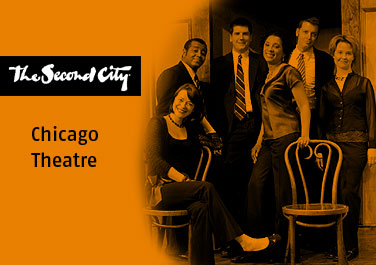The market says it is extremely difficult for long-time “command and control” managers to make the changes to develop an innovative organization. These changes require more engagement from – and more freedom for – employees to generate the ideas and energy that fuel the innovation engine. Most experts claim these changes are nearly impossible to make. We disagree. Our approach makes it possible for these leaders to make the changes that deliver the results they want.
Our approach uses three distinct phases to help leaders create innovative organizations. In the Definition stage, leaders define the change they are seeking and lay the foundation for the innovation effort. The Individual Development stage generates multiple ideas and develops those ideas with a series of small bets on their success. The final stage, Organizational Development, moves the most promising ideas through a more structured, multi-disciplined development stage. The end results are developed projects that are ready for traditional market introductions.
Definition
The organization’s leader should be ready to instigate change by laying the needed foundation and providing the direction critical for the organization to follow. This requires a couple of basic decisions: the type of innovation you seek; and basic ground rules for how the organization will move forward.
The type of innovation should be aligned with the organization’s risk profile. Breakthrough Innovation (products or services that create new industries) usually comes with a greater than 95% failure rate. On the other hand, Maintenance Innovation (making incremental improvements on existing products and services) is successful over 90% of the time, but may not create the innovation necessary for a successful future.
Leaders are responsible for matching the company’s risk profile with the innovation sought. We have ways to minimize costs and financial risks, but the underlying risk of failure remains a constant. Ideas will fail. Make sure you understand the failure you are willing to support and its cost.
It will also be important to design a basic blueprint for introducing and guiding the innovation effort. If command and control has been your management mantra, you must have a personal and organizational strategy for breaking out of the old patterns. The broader and more open you can make this strategy the more prepared you will be for the new situations that will arise. The strategy must clearly outline expectations in terms of participation, outcomes, and new behaviors.
For example, one company we know created a change environment and generated new perspectives by changing the functional responsibilities of the senior management team. Every member changed offices and took on one of their teammates roles (including the CFO). The change in roles altered two key dynamics. First, each leader was a novice in their new area of responsibility. This allowed them to freely ask questions and develop a new perspective. Second, the changes pulled the management team together, as members sought out advice from their predecessors in order to make a smooth transition. These two dynamics opened the senior team to new ideas and set the example for the remainder of the organization.
The leader must build the foundation for change, based on mutual trust, active engagement, and passion for new ideas. Your people must understand what you expect from them and what changes they will see to confirm that change is taking place. This also provides the opportunity for employees to “call you out” on deviations they see from their expectations. They will see deviations, either because conditions demand a different approach, or you have slipped back into old habits. Both of these situations are great moments for communication, correction, and deeper understanding of the objectives. These are leveraged moments where commitment strengthens or cynicism builds, depending on leadership reaction.
Individual Idea Development
The objective of this stage is to make small bets on as many good ideas as possible. Generating good ideas, each with passionate sponsors, is hard work. The easier the organization makes it to pursue these ideas, the more likely it will be that they see the light of day. Evaluation and screening at this point in the process should be kept to an absolute minimum. Instead, we should be looking for ways to create enthusiasm for good ideas so that they can begin to develop from thoughts into genuine business opportunities. One way to do this is to ask those with ideas to find other people in the organization who also believe in the idea. These ad-hoc dyads or small groups create the energy and enthusiasm good ideas need to succeed. If these champions are found, then the team can be supported with financial and other resources.
These other resources include time away from regular duties, the opportunity to attend classes or seminars to learn more about the possibilities, and support from experts who are available to help the group organize their efforts and make meaningful progress. The Definition phase should provide for these resources and set aside the money necessary to make them a reality. Remember, our objective is to make many small bets, rather than one large bet – still these bets cost money.
Proper execution of this phase will create many new business ideas, but more importantly, it will also generate the energy and enthusiasm required for the overall change effort. As people become more engaged with particular ideas and see the receptivity to new ideas, the innovation effort will gain a momentum of its own and begin to unleash the creative energy of your employees. That energy will then generate the new ideas that can start the process over again. Done right, the process becomes a virtuous circle, reinforcing and improving itself.
Organized Development
The best ideas eventually reach the point where they merit more than ad-hoc support. When that happens, simple cross-functional project teams make sense to create the support structure necessary to develop these ideas more fully. These teams should remain nimble and focused on making their ideas viable business opportunities.
Critical to making these teams work is an unusual role we call the Super Synthesizer. The Super Synthesizer is a person with unusual talents, connecting the passion for ideas with the skills necessary for them to succeed. They are straight-shooters with the ability to cut through confusing information and details in order to find unique solutions and approaches to difficult problems. They seek the truth without regard for internal politics, which makes them vital members of a team trying to create new ideas. When allowed to function effectively, Super Synthesizers can quickly clear the path for good ideas and see the critical limiters in less promising ideas. Their talents save time and money in the incubation process.
The end results of this step (and the complete incubation process) are emerging ideas ready for more traditional development efforts. The process increases the probability that the organization funds the projects most likely to generate the innovation needed to create market advantage. Small bets early in the process, combined with energetic exploration, put the company in solid position to make the correct bets when the stakes are higher.
Organizations implementing an incubation process can transform their innovation efforts from risky, big-bet, high failure propositions into a systematic process that uses the law of large numbers to create numerous smaller bets on promising ideas, diversifying the risk of the innovation effort. Even strict “Command-and-Control” leaders can use the system to develop the skills necessary to create a truly innovative organization.
We are passionate about innovation and the impact it can have on companies, their owners, and their employees. We would welcome opportunities to discuss the topic in more detail. We love to hear new perspectives which usually drive us to deeper understanding of the issues.
 Sure, if it happens to someone else!
Sure, if it happens to someone else! In each of these cases, one of the easy ways to understand the actions is to say “They’re crazy!” and move on to recovery action. It absolves us of any responsibility and puts the blame clearly on the other person.
In each of these cases, one of the easy ways to understand the actions is to say “They’re crazy!” and move on to recovery action. It absolves us of any responsibility and puts the blame clearly on the other person. both words and actions. People will tell you how they are thinking and what they want to see happen. Second, hold out the possibility that you may be wrong. For most of us, it’s tough to keep an open mind – especially when we have come to our own conclusion. Finally, all of this works much better when we genuinely want to help and connect with the people around us. It’s a quality that cannot be faked and will energize the search for the best solutions.
both words and actions. People will tell you how they are thinking and what they want to see happen. Second, hold out the possibility that you may be wrong. For most of us, it’s tough to keep an open mind – especially when we have come to our own conclusion. Finally, all of this works much better when we genuinely want to help and connect with the people around us. It’s a quality that cannot be faked and will energize the search for the best solutions. Those solutions usually involve the ability to bring alignment into complicated situations. Often those situations involve alignment on both personal and professional levels to achieve the best results. They involve multiple — often conflicting — goals between individuals, departments, and/or organizations. Time and personal effort is required to bring about proper alignment. That alignment creates durable and rugged solutions, resulting in lasting change.
Those solutions usually involve the ability to bring alignment into complicated situations. Often those situations involve alignment on both personal and professional levels to achieve the best results. They involve multiple — often conflicting — goals between individuals, departments, and/or organizations. Time and personal effort is required to bring about proper alignment. That alignment creates durable and rugged solutions, resulting in lasting change. Read the Vallon blog this week to learn about Kim Meek’s transition from corporate executive to entrepreneur. It’s a transition we may all need to experience.
Read the Vallon blog this week to learn about Kim Meek’s transition from corporate executive to entrepreneur. It’s a transition we may all need to experience. Harvey Cox
Harvey Cox Employees play a critical role in creating those relationships. They are as smart and capable as ever, loyal and wanting to make a difference for their companies. Modern technology makes it possible for teammates throughout an organization to connect and discover new ways to provide value for their customers. As leaders, it’s up to us to create the environment where these connections can be made and creativity unleashed. When we do, good things happen. When we don’t, the same technology that creates opportunities also makes it possible for our employees to find new places to work.
Employees play a critical role in creating those relationships. They are as smart and capable as ever, loyal and wanting to make a difference for their companies. Modern technology makes it possible for teammates throughout an organization to connect and discover new ways to provide value for their customers. As leaders, it’s up to us to create the environment where these connections can be made and creativity unleashed. When we do, good things happen. When we don’t, the same technology that creates opportunities also makes it possible for our employees to find new places to work.